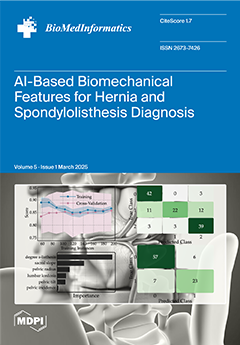Introduction: Remote health monitoring plays a crucial role in telehealth services and the effective management of patients, which can be enhanced by vital sign prediction from facial videos. Facial videos are easily captured through various imaging devices like phone cameras, webcams, or
[...] Read more.
Introduction: Remote health monitoring plays a crucial role in telehealth services and the effective management of patients, which can be enhanced by vital sign prediction from facial videos. Facial videos are easily captured through various imaging devices like phone cameras, webcams, or surveillance systems.
Methods: This study introduces a hybrid deep learning model aimed at estimating heart rate (HR), blood oxygen saturation level (SpO2), and blood pressure (BP) from facial videos. The hybrid model integrates convolutional neural network (CNN), convolutional long short-term memory (convLSTM), and video vision transformer (ViViT) architectures to ensure comprehensive analysis. Given the temporal variability of HR and BP, emphasis is placed on temporal resolution during feature extraction. The CNN processes video frames one by one while convLSTM and ViViT handle sequences of frames. These high-resolution temporal features are fused to predict HR, BP, and SpO2, capturing their dynamic variations effectively.
Results: The dataset encompasses 891 subjects of diverse races and ages, and preprocessing includes facial detection and data normalization. Experimental results demonstrate high accuracies in predicting HR, SpO2, and BP using the proposed hybrid models.
Discussion: Facial images can be easily captured using smartphones, which offers an economical and convenient solution for vital sign monitoring, particularly beneficial for elderly individuals or during outbreaks of contagious diseases like COVID-19. The proposed models were only validated on one dataset. However, the dataset (size, representation, diversity, balance, and processing) plays an important role in any data-driven models including ours.
Conclusions: Through experiments, we observed the hybrid model’s efficacy in predicting vital signs such as HR, SpO2, SBP, and DBP, along with demographic variables like sex and age. There is potential for extending the hybrid model to estimate additional vital signs such as body temperature and respiration rate.
Full article





